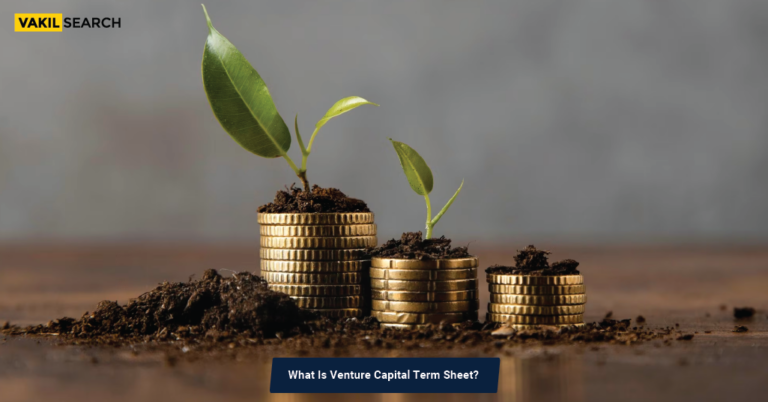When investing in a private company, you have access to a much wider array of opportunities than if you were investing in publicly traded companies. But that also means you have to be extra careful about the companies you choose and the risks you take.
Overview
This is why it’s important to know how to write an investment term sheet, which is basically a business agreement between an investor and a company outlining the terms under which they intend on collaborating. Writing an investment term sheet isn’t very difficult and with a little bit of research, can be simple enough for anyone. Investment term sheets are agreements used by both investors and startups to establish the terms under which they plan on partnering together. What Are the Key Factors of the Investment Term Sheet
What Is an Investment Term Sheet?
An investment term sheet is basically a business agreement between an investor and a company outlining the terms under which they intend on collaborating. Like a partnership agreement or operating agreement, they establish the structural framework of collaboration between parties as well as identify any conflicts that need to be resolved and how they will be resolved. In order to write an investment term sheet, you should first decide what type of investment you want to make in your startup. There are four main types of investments:
- Equity
- Debt
- Services (like consulting)
- Intellectual property (IP).
The type of investment will determine many factors like the risk involved with the deal and what recourse you can take if something goes wrong. For example, if you invest in intellectual property by buying your startup’s patent, you have exclusive rights to it; however, if you invest in a company using debt or services instead, your rights are limited. Once you’ve decided on what type of investment you want to make and how much money you want to spend on it, it’s time for research!
What is it used for?
An Investment Term Sheetsheet serves as a blueprint for the formal legal paperwork that will be drafted later by lawyers. They are used in various contexts, including investments, mergers, acquisitions, and long-term debt. They are extremely important for establishing initial understanding between parties involved in a deal.
What Does an Investment Term Sheet Include?
The main pieces of an investment term sheet are the terms of the investment and a set of operating and reporting guidelines. The term sheet will contain key information such as: –
- Investment amount
- Investment valuation
- Terms of return on investment (ROI)
- Exit strategy
- Policies and procedures to protect the interests of both parties.
There’s also a portion that includes specific information about what you’re investing in, including:
- Company description
- Business strategy
- Industry type
- Products or services offered
- Revenue model.
A final portion may include certain conditions for the transaction, like funding milestones, due diligence requirements, etc.
Things You Should Include in Your Term Sheet
One of the most important things to include in your term sheet are key terms. For example, you should specify how much you will invest and for what time period. You should also specify the milestones that need to be reached before you get paid out. You should also have a general understanding of how much equity you will receive and be able to negotiate with the company on this point. Your term sheet is a contract between parties, so it’s best to get it as specific as possible.
Investor rights and protections
Term sheets contain provisions that specify the rights and safeguards granted to investors. These provisions cover aspects such as the investor’s ownership stake in the company, their ability to vote on important matters, their priority in receiving proceeds from liquidation, safeguards against potential dilution of their ownership, and the commitments expected from the investors.
These provisions ensure that investors have a say in the decision-making process and are protected in case of certain events or circumstances.
Governance management and control
Term sheets also cover the way a company is governed, managed, and controlled. This can involve aspects such as who sits on the board, how decisions are made, and other governance issues.
These provisions clarify the roles and responsibilities of everyone involved and ensure that the business is managed and controlled efficiently.
Term sheets often include provisions related to exits and liquidity events. This may include details about the timing, methods, and valuation of potential exits, such as through an initial public offering (IPO) or acquisition.
These provisions outline the terms and conditions under which investors can exit their investment and realize a return.
Term sheets and valuations: How to be a smart negotiator
Term sheets play a crucial role in negotiations between parties involved in a deal Understanding the key terms and clauses in a term sheet is essential for being a smart negotiator. It is important to carefully review and negotiate the terms to ensure they align with the interests and goals of all parties involved. This includes considering the valuation of the investment, ownership stakes, and other economic terms.
How to Write an Investment Term Sheet?
First, you have to decide on the appropriate structure for your investment term sheet. In some cases, you need to make a decision about whether or not you want to do a simple agreement (the investor agrees to invest and in return, the company agrees to give them certain terms) or an operating agreement. In other cases, you might even want an investment agreement that includes compensation for investors. If you choose the former, it will be a simple agreement that does not require an operating agreement. If your company is looking for more security for its investors, then it would be wise to choose the latter option and include an operating agreement within the framework of the investment term sheet.
Next, list all of your key points in bullet point format so they can easily be included in future revisions as needed.
- What are the specific terms of this collaboration?
- What are our respective rights?
- How will we resolve any conflicts we may have?
- Who owns what?
- What happens if there is a disagreement over ownership and who controls what?
- How will decisions be made?
- What are our roles and responsibilities?
- Who is responsible for what cost related items such as legal work, travel expenses, etc.?
- Is there a fee structure in place already or do we agree on one that works best for both parties?
- Will I receive any equity or compensation from my collaboration with this company or do I simply get access
Tips for Writing Term Sheets
Here are some tips for writing a term sheet:
- Keep the term sheet simple and make sure it’s easy to understand
- Make sure the terms of the agreement make sense and don’t rely on legal jargon
- Be realistic about what can be agreed upon in an investment term sheet. For example, you might not be able to negotiate equity or non-diluted shares unless you have enough capital to invest in the company outright
- Consider whether there will be a time frame for which investors will own their shares and how they will hold onto them during that time.
Why some deals fail after a term sheet is signed
Despite signing a term sheet, some deals may still fail to materialize. This can happen due to various reasons, such as disagreements during the due diligence process, changes in market conditions, or unforeseen circumstances.
It is important to conduct thorough due diligence and address any potential issues before finalizing the deal to minimize the risk of deal failure.
Where to find a sample term sheet template
Sample term sheet templates can be found online and can serve as a starting point for drafting a term sheet. Navigate to this link to find resources and examples of term sheets that can be used as a reference.
Remember it is important to customize the template to fit the specific needs and requirements of the deal. Always seek legal advice to ensure compliance with applicable laws and regulations.
Conclusion
Investing in a company can be a great way to build wealth and diversify your portfolio, but if you don’t know what you’re doing you could end up with a significant amount of debt. Here’s a comprehensive guide to help you write an investment term sheet for your business.
Term sheets are usually written by accountants or lawyers instead of by business owners. Vakilsearch is expert lawyer can help you draft term sheets to help you grow your business.
Also read:










